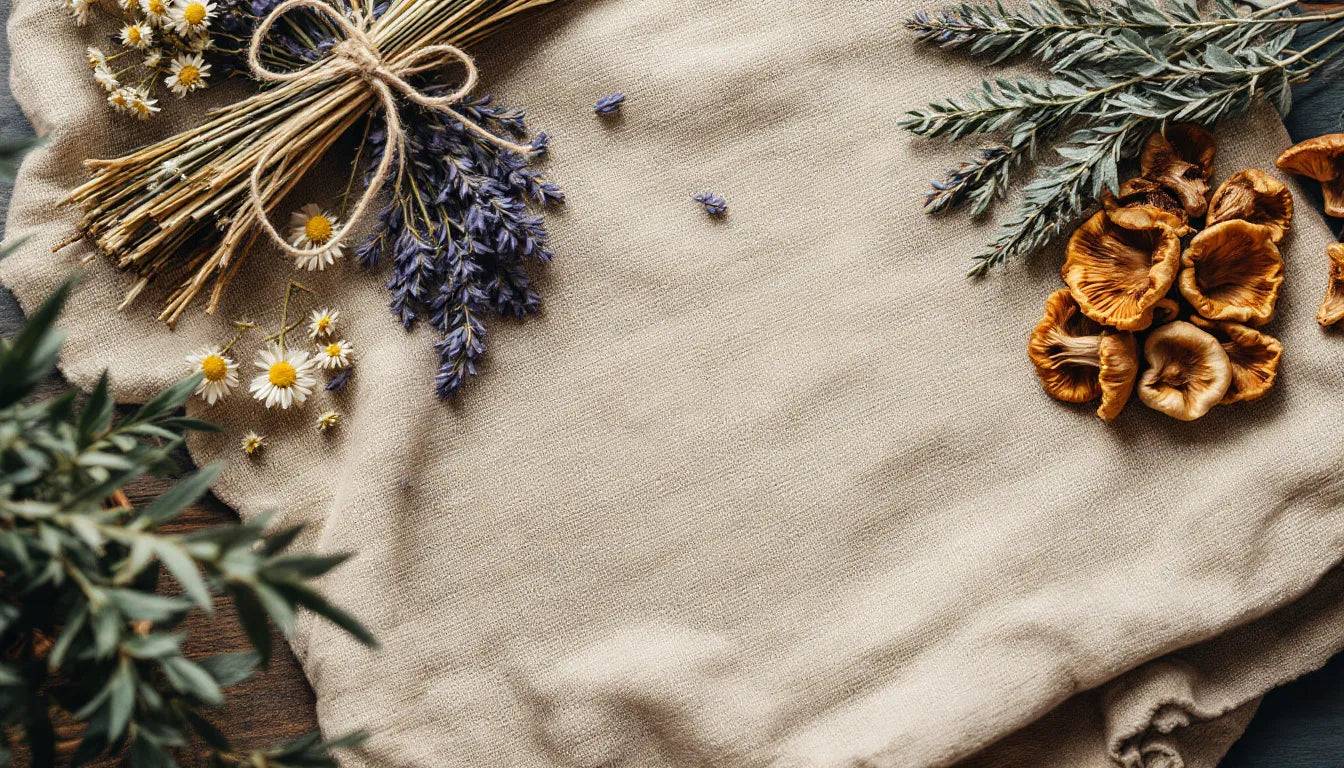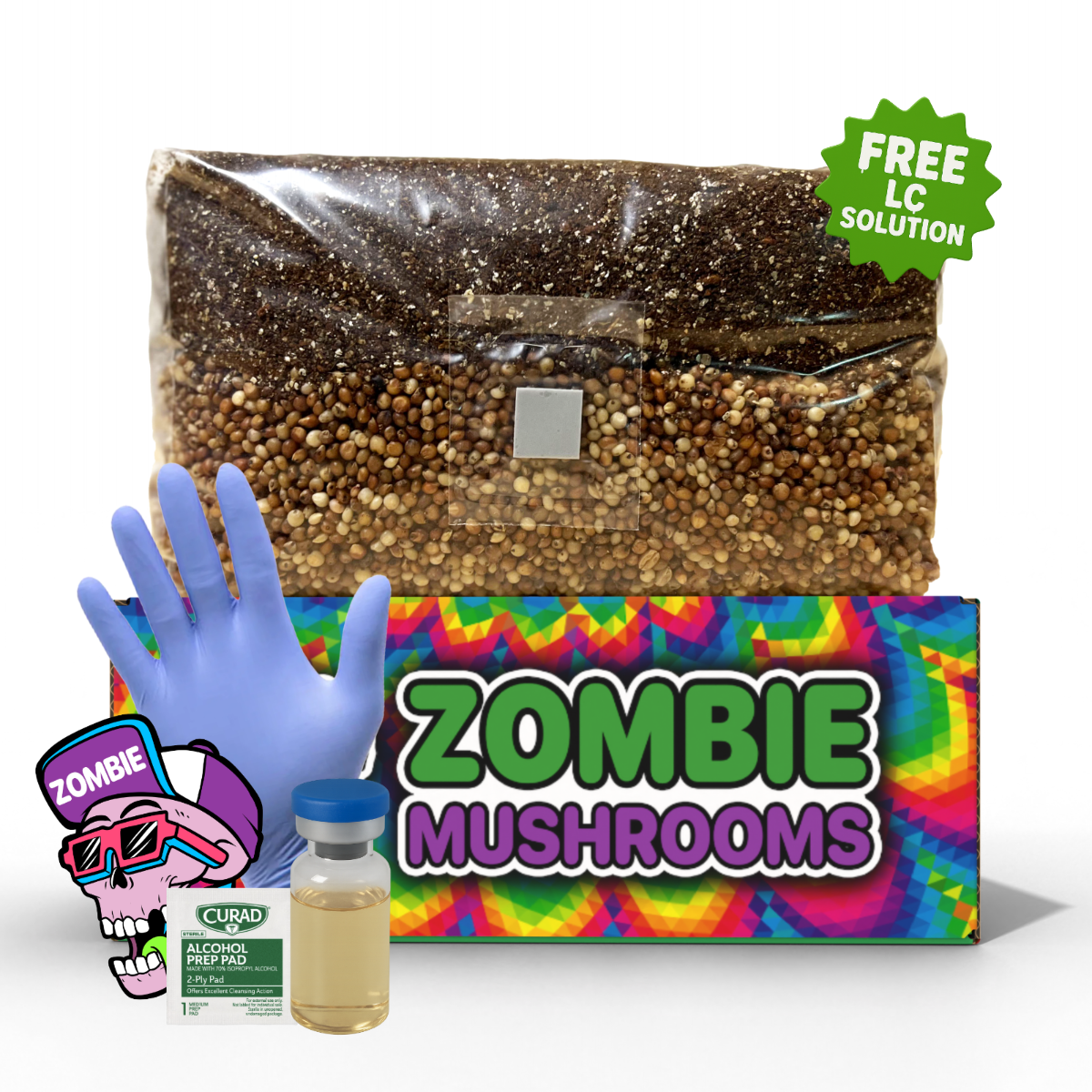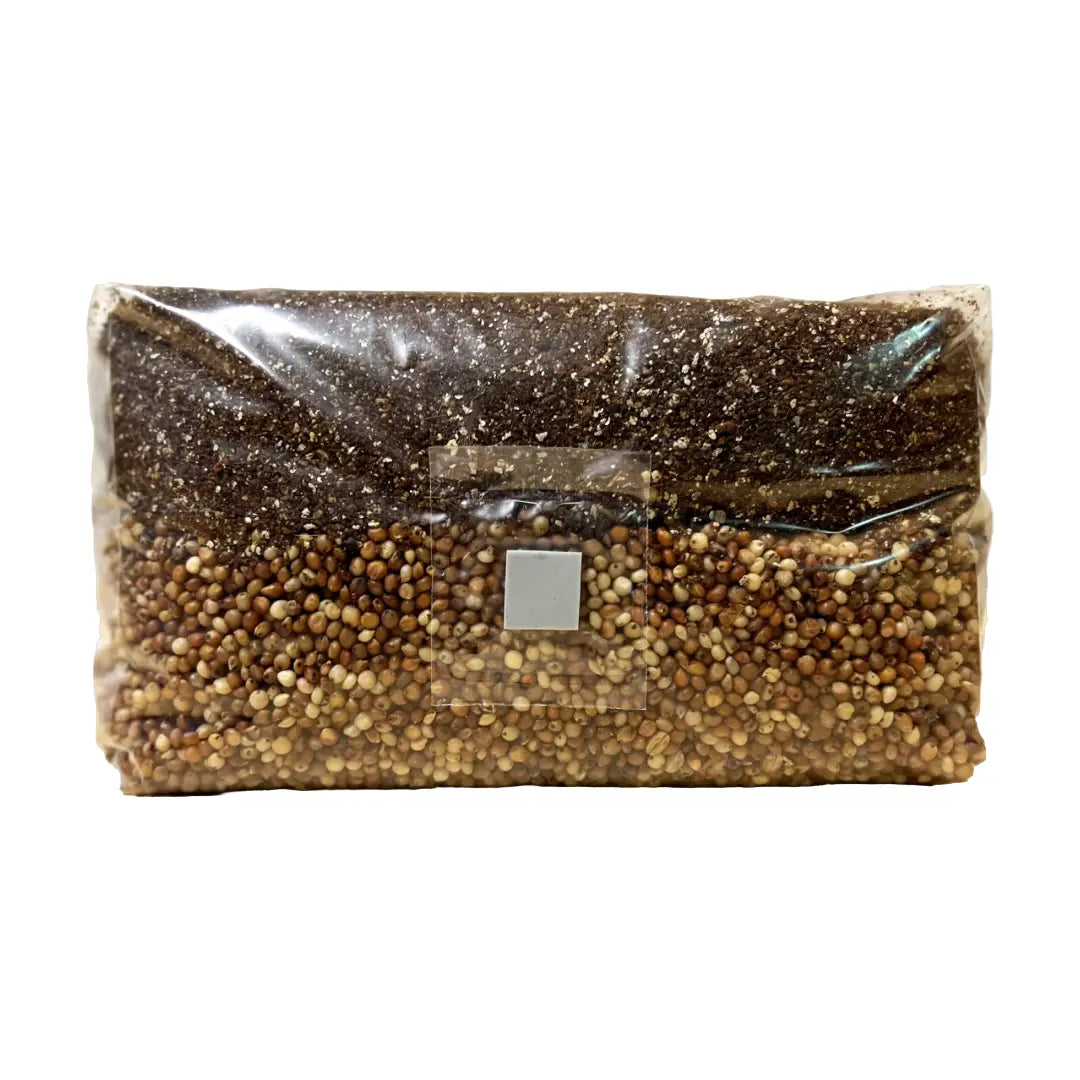⬇️ Prefer to listen instead? ⬇️
- Lion’s Mane mushroom may help the brain work better and lessen signs of feeling down.
- Cordyceps is known in traditional medicine for helping with sports and energy.
- Reishi's polysaccharides have shown they might help the immune system in recent studies.
- Chaga tea was traditionally drunk in Russia for helping with digestion and living a long time.
- Making tea by simmering for a long time may get out more healthy things than simple infusions.

Mushroom Tea Recipes: Which Cultures Brew It Best?
Mushroom tea isn't just a way to be healthy now. It's an old tradition. People have used it across the world for a long time and in special events. From the misty mountains of East Asia to the forested lands of Eastern Europe and the knowledge of Native Americans, cultures everywhere have made mushroom tea. They did this to help people feel strong, think clearly, and live a long time. Today, more people are learning about mushrooms for health like reishi, lion’s mane, and chaga. Many are learning about these old ways again in their own kitchens—and with our easy-to-use grow bags, you can cultivate these varieties at home and brew your own fresh mushroom teas.

The Ancient Roots of Mushroom Tea
The story of mushroom tea recipes started thousands of years ago. That's when long ago, people looked in forests not just for food, but for ways to heal. Different places saw mushrooms not just as food. They were seen as strong helpers for health, spiritual things, and living.
In Traditional Chinese Medicine (TCM), mushrooms like reishi were known to help the spirit, add energy to the body (called Qi), and help people live longer. These were often cooked slowly for hours as decoctions. This helped get out good things in them, like polysaccharides and triterpenes. These things are hard to get with quick brewing or just cooking.
Across ancient Europe, wise women and people who knew about herbs made teas from mushrooms for different sicknesses. Many mushrooms are hard and woody. So, making tea, especially by simmering for a long time, was the best way to get out the helpful stuff. Different cultures figured out these methods on their own. This shows how much people everywhere valued mushrooms in their health practices.

East Asian Mushroom Tea Traditions
When we talk about mushrooms for health and tea, we must look at East Asia. Using mushrooms there, especially as tea, is a big part of old health methods.
China: The Kingdom of Reishi
In old Chinese writings like the Shennong Ben Cao Jing, reishi mushroom (Ganoderma lucidum), known as Lingzhi, is called a "top herb". It helps with life energy and makes people feel calm, helps their spirit, and might slow down aging. Mushroom tea recipes from China often mix reishi with jujube fruit, licorice root, and ginger. This makes the tea taste better and gives benefits that work together.
People in Asia study Reishi a lot because of things called polysaccharides in it. These might help the immune system.
Japan: Longevity Traditions
In Japan, people use mushrooms like Lion’s Mane (Hericium erinaceus) and chaga (Inonotus obliquus). They use them in old ways of healing and also in modern health practices. Japanese mushroom tea is often made simply. They steep thinly sliced mushrooms in hot water. Sometimes they add green tea or seaweeds for more minerals.
Lion’s Mane is liked a lot because it seems to help the brain. People think it helps make Nerve Growth Factor (NGF). This helps keep nerve cells healthy and grow new ones.
Korea: Cordyceps Infusions
Korean people who use herbs make special teas like dongchunghacho-cha, which is cordyceps tea. Cordyceps (especially the C. militaris kind) are thought to make lungs stronger, give more energy, and help the immune system work better. Older people or those getting better from sickness often drink this tea. These teas are sometimes fermented to make them work better.

Indigenous Remedies from North America
Before people started talking a lot about “functional mushrooms” for health, Native American tribes were making mushrooms into strong teas for healing and special events.
Sacred and Practical Uses
Chaga and Turkey Tail mushrooms were used a lot. Chaga was liked in cold places. It was used to help the immune system, fight tiredness, and make people feel good during hard winters. Making the tea often meant cooking it slowly for hours. This showed they respected that taking a long time got out all the good things.
In the Pacific Northwest and other forest areas, Turkey Tail (Trametes versicolor) was used. People drank it because it seemed to help bring the body back into balance, especially with breathing and digestion.
These mushrooms weren't used alone. They were mixed with other plants like echinacea, yarrow, and wild mint. These mixes were thought to help the body handle stress. This showed how their traditional medicine saw everything as connected.

Forest Brews of Eastern Europe & Russia
Eastern Europe and Russia have strong traditions of making mushroom tea. These traditions are still around. And one mushroom is the most important: chaga.
Chaga Tea: The Siberian Secret
Chaga (Inonotus obliquus) is found on birch trees in hard northern weather. It doesn't look like a normal mushroom. But it's a strong thing that helps the body handle stress. People have used it for hundreds of years in Russian folk medicine. People who use herbs see it as something that helps the body get rid of bad things, helps the immune system, and is good for stomach, gut, and body processes.
They often cook it for a long time in big pots called samovars using pieces found in the wild. Old Russian ways of making it might also add
- Birch bark (effects that work well together)
- Black tea leaves (for taste and more antioxidants)
- Honey or lemon for taste and pH balance
In old Russian medicine, chaga extracts were used for stomach problems and to help people last longer (Shashkina et al., 2006).
Preservation For Winter Use
Dried chaga pieces could be kept for months. This was good because they gave people good things to eat when other food was hard to find. Some homes still do this old family practice. They make chaga tea part of their daily life. Not just something new, but as a way to stop sickness before it starts.

South American Fungal Infusions
Mushrooms are not used as much in South American tea traditions as in other places. But where they are used, it's more for spiritual reasons than for healing sickness.
Shamanic Integration
In parts of the Amazon, mushrooms are sometimes put in ayahuasca-adjacent brews. Here, mushrooms might be added to make visions stronger and help people vomit (seen as cleansing). These tea recipes are not about treating sickness. They are part of a special event. They are teas with mushrooms that affect the mind or consciousness. They are meant for exploring what's inside you.
These are special practices kept secret by local people. They often include not eating for many days, special breathing, and help from a shaman or healer.

African Mushroom Tea Preparations
Not as well known around the world, several African cultures use mushrooms not just for food. They also make teas from them for healing.
Folk Healing with Fungi
In countries across East and West Africa, especially Kenya, Nigeria, and Tanzania, mushrooms like Termitomyces are used. These are big mushrooms with gills that grow with termites. They are made into teas to help with
- Making swelling go down
- Helping with infections
- Helping digestion and making fevers better
These teas are often made when people get sick during certain seasons. They use herbs found nearby like lemongrass or neem. People might drink them warm or cold.
These practices show a lot of knowledge passed down over many years about how plants and medicine work well together.

Modern Adaptations of Traditional Recipes
More people around the world want mushrooms that help the body handle stress. Because of this, old mushroom tea recipes have been changed to be easier to use and taste better.
Instant Mushroom Wellness
Modern ways include
- Mushroom powders: Easier to measure and mix with hot or cold drinks
- Functional lattes: Lion’s Mane with coconut milk and cinnamon for a morning brain boost
- Blended tea bags: Mixing calming herbs like lemon balm or chamomile with mushrooms
Products now aim for certain goals like helping the brain work, boosting the immune system, or helping sleep. They do this by putting different mushrooms together with herbs that help.
Recent studies showed Lion’s Mane mushroom might protect nerve cells and lessen signs of feeling down (Zhang et al., 2024).
Tech-Enhanced Extraction
Some companies use ways to get things out using both water and alcohol. This gets out polysaccharides that dissolve in water and triterpenes that dissolve in alcohol. And then they make the result into powders. This helps the body use the good things as much as possible. It means you don't need to cook the mushrooms for many hours.

How to Brew Mushroom Tea at Home – Techniques Across Cultures
If you want to make your own mushroom tea, you don't need a lab or special training with herbs. Just some simple things.
Brewing Techniques
- Hot Decoction (Old Chinese/Russian Way)
-
- Add 5 to 10 g dried mushrooms (Reishi or Chaga) to 2–3 cups water.
- Cook for 1 to 2 hours. Add ginger, licorice, or honey if you like.
-
Steep and Sip (A Way Used in the West)
- Use 1 tsp mushroom powder (Lion’s Mane or Cordyceps).
- Pour 8 oz hot water, let it steep for 10–15 minutes. Stir and enjoy.
-
Mixed Tea
- Mix dried mushrooms with ginger, turmeric root, green tea, and goji berries.
- Cook gently for 20–30 minutes. Make it sweet with honey or maple syrup.
-
Using a French Press
- Add sliced or powdered mushroom to a French press.
- Pour boiling water, steep 15–30 minutes, push down the plunger, and enjoy your tea.
These ways let you make mushroom tea just how you like it. They use ideas from around the world and modern simple ways.

Choosing the Right Medicinal Mushroom for Your Needs
Now, you can find many kinds of mushrooms in stores for your health. The type you choose matters. Here’s a quick guide
| Mushroom | Used In These Places | Good For |
|---|---|---|
| Reishi | China, Japan, Korea | Lessens stress, helps immune system |
| Lion’s Mane | Japan, China | Helps the brain think, might fix nerve cells |
| Chaga | Russia, North America | Lots of antioxidants, helps digestion |
| Cordyceps | Tibet, Korea, Global sports recovery | Gives more energy and helps the body use oxygen |
| Turkey Tail | Native America, Asia | Helps the gut and immune system |
For feeling good every day, pick a mushroom that helps with what you want. Maybe it's for less stress, focus, or your immune system. Start with a small amount and use more slowly.

From Forest to Mug: Grow, Harvest, and Brew Your Own
Growing your own mushrooms for health is easier now because of kits you can buy. Growing at home is good for the planet, gives you fresh mushrooms, and teaches people who like tea something new.
How to Get Started
- Choose a Kit: Companies like Zombie Mushrooms sell kits you can use on your kitchen counter for Lion's Mane, Oyster, and even Reishi.
- How to Harvest Safely: Let the mushrooms grow fully before cutting.
- Dry Them Right Away: Stop them from going bad and make the flavors stronger.
- How to Store Them Well: Put them in containers that air can't get into. Keep them away from light and wet places.
When ready to brew
- Use 5–10 g dried mushroom for every 2 cups of water.
- Cook for 30–60 minutes or steep if using powders.
- Brew woody mushrooms like chaga two or three times to get out all the good things.
You don't need special tools. You can use a French press or a pot on the stove to make your mushroom tea from around the world.
Frequently Asked Questions
Can you reuse mushrooms for more than one brew?
Yes. Especially Reishi and Chaga. You can cook them 2–3 times before they lose strength.
What’s the difference between extract vs. whole mushroom tea?
Extracts are stronger and work faster. Whole mushrooms give you all the good things, but you need to cook them for a long time.
Can mushroom tea replace coffee?
Teas like Lion’s Mane and Cordyceps have no caffeine. People often use them as gentler morning drinks that give you steady energy later.
How long can I store dried mushrooms for tea?
1–2 years if sealed in a cool, dry place. Keep them away from sunlight and wet places so they stay strong.
Sip Across Civilizations
From old farms in Hunan to icy forests in Siberia, mushroom tea recipes have always given strength and helped people think clearly when they drank them. Whether you're learning about old ways or making your own tea habit, mushroom tea is something good to have any time.
Why not learn from these old family ways and make your own tea that is good for you? When you drink it, you could feel the wisdom of hundreds of years. One mushroom at a time.


